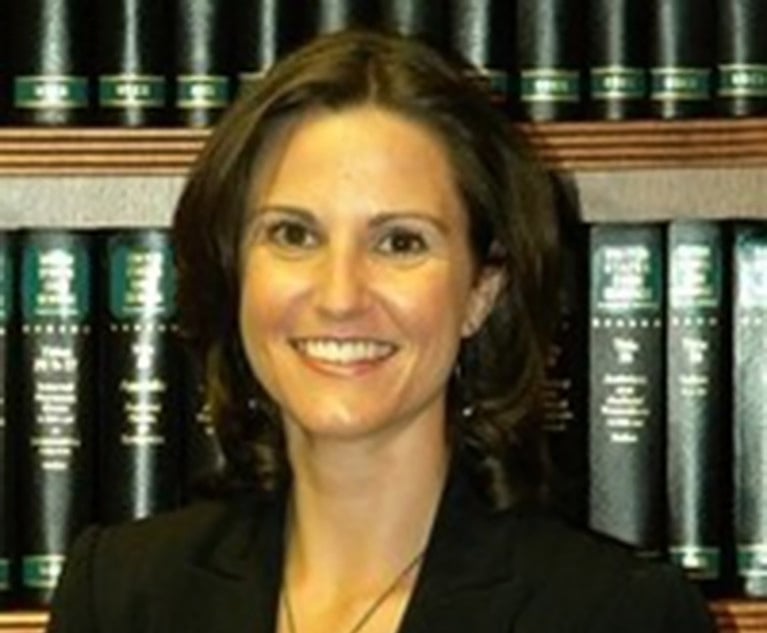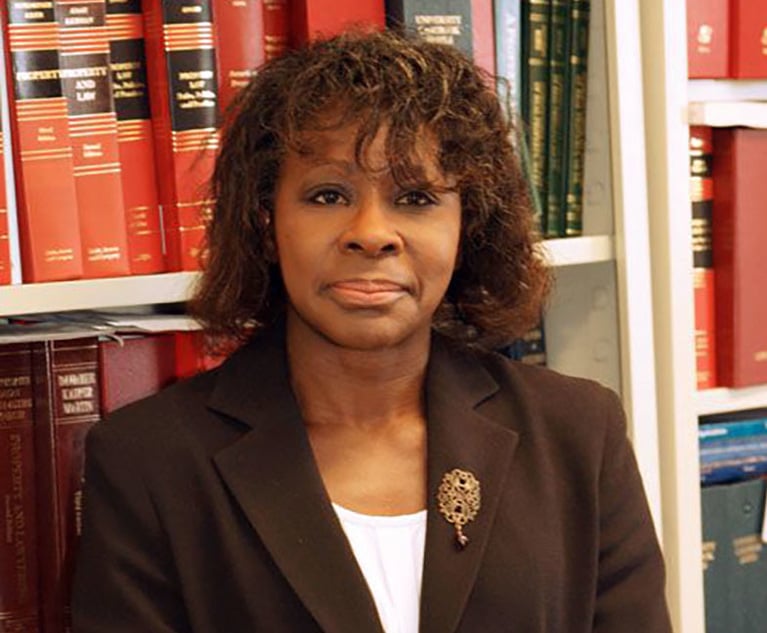Something Old, Something New: Securities Enforcement in the Age of Social Media
The message that the SEC is sending through the Musk settlement comes through loud and clear. Statements made via Twitter, or any other social media platform, will be subject to the same scrutiny as other more traditional forms of communication.
December 07, 2018 at 03:20 PM
8 minute read
 At a time when breaking norms has become the new normal, the recent battle between Tesla's charismatic chief executive, Elon Musk, and the Securities and Exchange Commission's regulatory enforcers captured the attention of the public. Musk's seemingly deliberate use of Twitter to pick a fight with the SEC, combined with his track record of fostering paradigm shifts in several industries, suggested to securities lawyers and white-collar practitioners that we would soon see something new under the sun. It was not to be. Although Musk himself has earned a reputation for being incredibly innovative, the SEC's case against him was not. We believe the absence of innovation provides an important opportunity to consider the road not taken, at least not yet.
At a time when breaking norms has become the new normal, the recent battle between Tesla's charismatic chief executive, Elon Musk, and the Securities and Exchange Commission's regulatory enforcers captured the attention of the public. Musk's seemingly deliberate use of Twitter to pick a fight with the SEC, combined with his track record of fostering paradigm shifts in several industries, suggested to securities lawyers and white-collar practitioners that we would soon see something new under the sun. It was not to be. Although Musk himself has earned a reputation for being incredibly innovative, the SEC's case against him was not. We believe the absence of innovation provides an important opportunity to consider the road not taken, at least not yet.
Social Media and Securities Violations
Since its adoption in 1942, SEC Rule 10b-5 has been the SEC's principal tool for enforcing the securities laws. The rule makes it unlawful “(a) to employ any device, scheme, or artifice to defraud, (b) to make any untrue statement of a material fact or to omit to state a material fact necessary in order to make the statements made, in the light of the circumstances under which they were made, not misleading, or (c) to engage in any act, practice, or course of business which operates or would operate as a fraud or deceit upon any person, in connection with the purchase or sale of any security.” This broad formulation has made the rule flexible enough to be applied to all manner of deceptive conduct and to keep pace with evolving information technology. The key to such adaptability is that the rule is agnostic with respect to the communication medium or technology being employed. Newspaper, radio, television, telephone, fax, email and the internet have been easily assimilated into the regulatory regime.
Enforcement actions alleging violations of Rule 10b-5 based on false and misleading tweets are, therefore, not new or innovative. For example, as far back as 2014, in In re Krinos, the SEC obtained a decision on default in administrative proceeding against Krinos Holdings and its principal for raising $1 million through the unregistered sale of securities while making materially false and misleading statements, at least one of which included a statement through Krinos Holdings' Twitter account. Criminal charges and a guilty plea soon followed in the Northern District of Ohio. In 2015, the U.S. Attorney's Office for the Northern District of California and the SEC unsealed parallel criminal and civil charges against James Alan Craig, alleging that Craig sent false tweets via Twitter accounts deceptively named to appear to belong to well-known research firms in order to manipulate the stock price of two public companies. The SEC has obtained a default judgment against Craig, who is fighting extradition from his native Scotland.
And the leaders of the SEC have clearly signaled their intention to apply old rules to new technologies. In September 2017, almost a year before Musk's fateful tweets, Stephanie Avakian, co-director of the SEC's Enforcement Division, responding to priorities set by SEC Chairman Jay Clayton, announced the creation of a new Cyber Unit. While the Cyber Unit appears to be primarily occupied with matters relating to cryptocurrency, Avakian promised that “[t]he Cyber Unit will focus the Enforcement Division's substantial cyber-related expertise on targeting cyber-related misconduct [including] market manipulation schemes involving false information spread through electronic and social media.”
Tweets Heard Around the World
On Aug. 7, 2018, Elon Musk, the then Chairman and Chief Executive Officer of Tesla, a prolific user of Twitter, used his mobile phone to tweet a message that could be viewed by his 22 million followers: “Am considering taking Tesla private at $420. Funding secured.” Later that day, Musk posted messages that included “My hope is *all* current investors remain with Tesla even if we're private. Would create special purpose fund enabling anyone to stay with Tesla.” And “Shareholders could either to [sic] sell at 420 or hold shares & go private” and “Investor support is confirmed. Only reason why this is not certain is that it's contingent on a shareholder vote.” The price of Tesla stock reacted immediately to Musk's initial tweet and common shares closed up almost 11 percent from the previous day.
Six days after his August 7th tweets, amid growing speculation that the SEC was investigating Tesla and Musk, Musk announced that he had held discussions with Saudi Arabia's sovereign wealth fund, a large Tesla shareholder, about a proposed going-private transaction. Musk added that he had “no question that a deal with the Saudi sovereign fund could be closed.”
On August 15th, the New York Times and others reported that the SEC had subpoenaed Tesla. On September 27th, the SEC filed a complaint in the Southern District of New York, alleging that Musk “knew or was reckless in not knowing that each of [the August 7th tweets] was false and/or misleading” and that “Musk knew that he had never discussed a going-private transaction at $420 per share with any potential funding source, had done nothing to investigate whether it would be possible for all current investors to remain with Tesla as a private company via a 'special purpose fund,' and had not confirmed support of Tesla's investors for a potential going-private transaction.” Two days later, Musk capitulated. Both he and Tesla entered into settlements that required each of them to pay $20 million in penalties. The settlements further required Musk to step down from his position as Tesla's Chairman for at least three years. Tesla was also required to appoint two additional independent directors and “establish a new committee of independent directors and put in place additional controls and procedures to oversee Musk's communications.”
What's Next?
The message that the SEC is sending through the Musk settlement comes through loud and clear. Statements made via Twitter, or any other social media platform, will be subject to the same scrutiny as other more traditional forms of communication. As a result, corporations and their outside professionals will need to develop rigorous programs to educate company insiders on the dos and don'ts of social media use. Corporate leaders will likely be discouraged from the spontaneous tweet or post, social media accounts will be closely monitored and the same lawyers and investor relations professionals that flyspeck a corporation's regulatory filings will vet all social media communications before they are disseminated. This is not necessarily a desirable result.
The particular facts and circumstances of the Musk case should not lead lawmakers, regulators and commentators to overlook the differences between social media and traditional media. Social media gives individuals—including CEOs and U.S. presidents alike—the ability to communicate with wide audiences directly and spontaneously. As the world has come to understand, the content of tweets and other social media is often exaggerated, hyperbolic and unreliable. Evidence of the public's awareness of this reality can be found in the SEC's own complaint against Musk, which cites numerous examples of recipients of the tweets expressing doubts about its truth and seriousness. Tesla's own head of Investor Relations sent Musk a text asking, “Was this text legit?” A business reporter texted Musk's chief of staff, “Quite a tweet! (Is it a joke?)” and another texted Musk directly, “Are you just messing around” and asking “Are you serious?” These reactions might well have provided the kernel of an interesting defense for Musk had he not in subsequent tweets doubled down on his initial message.
But the fact remains that social media has the capacity to provide more information to investors, and deliver it much faster and more efficiently than an SEC filing. Chances are better that what a CEO is really thinking will be manifested in an unvarnished tweet than in scripted communications drafted and tempered by cautious gatekeepers.
The particulars of the Musk case should not obscure the possibility that perhaps a different model is needed. What would it look like? One possibility would be to adapt the “safe harbor” concept that the Private Securities Litigation Reform Act created for “forward looking statements.” Corporations and their executives, who currently must alert investors if they plan to announce material information via a Twitter account, could be given the option to identify their Twitter accounts as containing “spontaneous statements” and disclose certain risk associated with the abbreviated nature of those statements. Such statements could then be exempted from civil actions, and even regulatory enforcement, unless they were made with actual knowledge of their falsity. Another approach would be to give corporations a grace period in which to decide to adopt, clarify or disavow statements made by an executive on a social media platform. Any such reforms to the securities laws would be premised on the idea that investors may have to take responsibility for distinguishing between a “mere tweet” and news that should impact investment decisions. That is a skill that everyone, not merely investors, are likely to find increasingly useful.
Paul H. Schoeman is a partner at Kramer Levin Naftalis & Frankel and co-chair of the firm's white-collar defense and investigations practice. Maxim M.L. Nowak is an associate at the firm.
This content has been archived. It is available through our partners, LexisNexis® and Bloomberg Law.
To view this content, please continue to their sites.
Not a Lexis Subscriber?
Subscribe Now
Not a Bloomberg Law Subscriber?
Subscribe Now
NOT FOR REPRINT
© 2025 ALM Global, LLC, All Rights Reserved. Request academic re-use from www.copyright.com. All other uses, submit a request to [email protected]. For more information visit Asset & Logo Licensing.
You Might Like
View All


Trending Stories
- 1ACC CLO Survey Waves Warning Flags for Boards
- 2States Accuse Trump of Thwarting Court's Funding Restoration Order
- 3Microsoft Becomes Latest Tech Company to Face Claims of Stealing Marketing Commissions From Influencers
- 4Coral Gables Attorney Busted for Stalking Lawyer
- 5Trump's DOJ Delays Releasing Jan. 6 FBI Agents List Under Consent Order
Who Got The Work
J. Brugh Lower of Gibbons has entered an appearance for industrial equipment supplier Devco Corporation in a pending trademark infringement lawsuit. The suit, accusing the defendant of selling knock-off Graco products, was filed Dec. 18 in New Jersey District Court by Rivkin Radler on behalf of Graco Inc. and Graco Minnesota. The case, assigned to U.S. District Judge Zahid N. Quraishi, is 3:24-cv-11294, Graco Inc. et al v. Devco Corporation.
Who Got The Work
Rebecca Maller-Stein and Kent A. Yalowitz of Arnold & Porter Kaye Scholer have entered their appearances for Hanaco Venture Capital and its executives, Lior Prosor and David Frankel, in a pending securities lawsuit. The action, filed on Dec. 24 in New York Southern District Court by Zell, Aron & Co. on behalf of Goldeneye Advisors, accuses the defendants of negligently and fraudulently managing the plaintiff's $1 million investment. The case, assigned to U.S. District Judge Vernon S. Broderick, is 1:24-cv-09918, Goldeneye Advisors, LLC v. Hanaco Venture Capital, Ltd. et al.
Who Got The Work
Attorneys from A&O Shearman has stepped in as defense counsel for Toronto-Dominion Bank and other defendants in a pending securities class action. The suit, filed Dec. 11 in New York Southern District Court by Bleichmar Fonti & Auld, accuses the defendants of concealing the bank's 'pervasive' deficiencies in regards to its compliance with the Bank Secrecy Act and the quality of its anti-money laundering controls. The case, assigned to U.S. District Judge Arun Subramanian, is 1:24-cv-09445, Gonzalez v. The Toronto-Dominion Bank et al.
Who Got The Work
Crown Castle International, a Pennsylvania company providing shared communications infrastructure, has turned to Luke D. Wolf of Gordon Rees Scully Mansukhani to fend off a pending breach-of-contract lawsuit. The court action, filed Nov. 25 in Michigan Eastern District Court by Hooper Hathaway PC on behalf of The Town Residences LLC, accuses Crown Castle of failing to transfer approximately $30,000 in utility payments from T-Mobile in breach of a roof-top lease and assignment agreement. The case, assigned to U.S. District Judge Susan K. Declercq, is 2:24-cv-13131, The Town Residences LLC v. T-Mobile US, Inc. et al.
Who Got The Work
Wilfred P. Coronato and Daniel M. Schwartz of McCarter & English have stepped in as defense counsel to Electrolux Home Products Inc. in a pending product liability lawsuit. The court action, filed Nov. 26 in New York Eastern District Court by Poulos Lopiccolo PC and Nagel Rice LLP on behalf of David Stern, alleges that the defendant's refrigerators’ drawers and shelving repeatedly break and fall apart within months after purchase. The case, assigned to U.S. District Judge Joan M. Azrack, is 2:24-cv-08204, Stern v. Electrolux Home Products, Inc.
Featured Firms
Law Offices of Gary Martin Hays & Associates, P.C.
(470) 294-1674
Law Offices of Mark E. Salomone
(857) 444-6468
Smith & Hassler
(713) 739-1250







